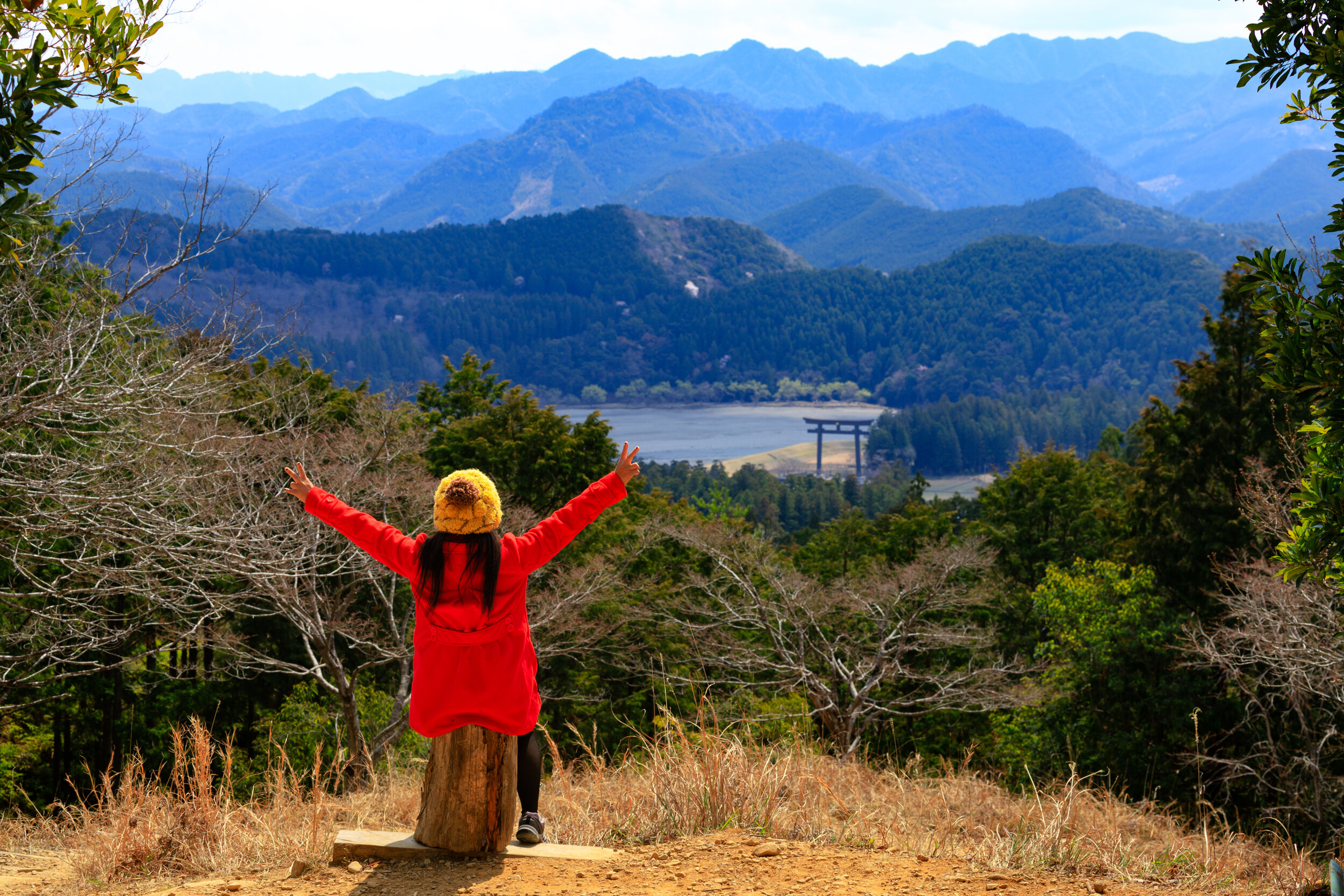Kumano Kodo
Highlights:
Sacred shrines at Hongu and Nachi
Nachi-taki waterfall
Yunomine Onsen hot spring baths
Stunning forests and mountains
Brief:
⏱ Duration: 6 Days
🗺 Distance: 70 km
⛰ Grade: Moderate
🗓 Best Time: April - November
🛏 Accommodation: Inns/Ryokans
Walk Overview
The Kumano Kodo is one of only two pilgrimage walks in the world to be given UNESCO World heritage status. It is an ancient trail which has scenic, historical and cultural significance. In contrast to the frenetic major cities, this walk enables walkers to experience traditional, rural Japan.
The stunning scenery across the mountainous Kii Peninsula on Japan’s main island of Honshu comprises tranquil deep forests, mountains, valleys, rivers and waterfalls. In Springtime it showcases the flowering cherry blossom trees and in Autumn it features the saturated colours of the autumnal foliage.
Historically, this was a route followed by emperors, aristocrats and monks. They visited and worshipped at the three grand shrines of Kumano ( Hongu, Nachi and Hayatama) in the hope of attaining spiritual rebirth and enlightenment. The surrounding mountains and forests of the Kii Peninsula were believed to bestow mystical powers upon those who worshipped in this sacred landscape.
Along the way, walkers explore traditional villages and natural hot spring towns. A Japanese onsen bath is the perfect treatment for weary feet at the end of the day. Traditionally, the hot spring baths were used by pilgrims as a means of purification before visiting a shrine. Accommodation is provided at traditional ryokan inns and minshuku guesthouses where delicious local cuisine is on offer.
There are many variations of the Kumano Kodo pilgrimage comprising a network of routes across the Kii Peninsula. A particular favourite is the Imperial Nakahechi route which was historically used by the imperial family on their pilgrimage from Kyoto to the Kumano Hongu Taisha sacred shrine. Other versions include the Iseji eastern route, the Oheci coastal route and the Kohechi mountainous route.
The walk usually takes between 4-6 days. An itinerary following part of the Nakahechi version of the Kumano Kodo in 6 walking days is shown below. Various Kumano Kodo itineraries are offered by various tour operators. Some itineraries are longer so as to also visit the third grand shrine of Hayatama Taisha at Shingu. The UNESCO World Heritage registered section begins at Takijiri-oji which is considered to be the entry point to the sacred area of Kumano.
Assistance and further information:
For assistance in walking all or part of the Kumano Kodo, click the button below:
For information on other walks on the Kii Peninsula, click the button below:
A six day itinerary for the Kumano Kodo is shown below. The Kumano Kodo encompasses a variety of trails and the walk operators offer a range of options.
Itinerary
A six day itinerary is shown below.
Day 1
Takijiri Oji to Takahara
Distance: 4.5km
Time: 2 hours
Accommodation: Hotel/Minshuku
Day 2
Takahara to Chikatsuyu
Distance: 10km
Time: 4 hours
Accommodation: Inn/Minshuku
Day 3
Chikatsuyu to Hongu
Distance: 24km
Time: 8 hours
Accommodation: Onsen Ryokan
Day 4
Bus to Ukegawa, Ukegawa to Koguchi
Distance: 12km
Time: 4 hours
Accommodation: Ryokan
Day 5
Koguchi to Nachi-san
Distance: 15km
Time: 6 hours
Accommodation: Hotel/Minshuku
Day 6
Kii-Katsuura
Distance: 2km
Time: 1 hour
Accommodation: Onward travel
Walk Options
Guided
Several tour operators offer part of this walk as a guided trip.
Accommodation options include hotels (en-suite bathrooms), Japanese style inns (ryokan), family guesthouses (minshuku) and pilgrim lodges (shukubo). The traditional style accommodation such as ryokan and minshuku provide futon bedding, tatami mat flooring and shared bathrooms.
Some tour operators offer additional activities such as Kumano River boat rides, Katsuura fish market visits and traditional music performances.
Typically, the package offered by these operators include:
9 Day tour with professional guides
8 Nights accommodation
All breakfasts and dinners
Transfers between tour locations, as set out in the itinerary
Entrance fees to museums, shrines and temples, as per the itinerary
Baggage transfers (although the extent of this varies between tour operators)
Assisted self-guided
Several tour operators offer self-guided trips on the Kumano Kodo trail. Typically, the service includes:
Track notes, maps and information pack
Accommodation. En-suites are not generally available at traditional inns.
Transfers between track locations
Breakfasts and dinners
Telephone support from local English speaking area manager
Some tour operators include train tickets from/to Osaka or Kyoto to the start of the walk and from the end of the walk
The duration of the self-guided options vary depending upon how far you wish to walk each day.
Independent
There is a range of traditional inns and guesthouses in the villages along the route offering accommodation and local cuisine. Some have private onsen hot spring facilities.
Essential Information
Access
The closest airport is the Osaka Kansai Airport (KIX).
Alternatively, you can fly into Tokyo Narita Airport (NRT) and fly/train to Kyoto.
Packages can include train tickets from Osaka/Kyoto to the start of the walk and train tickets from the end of the walk to Osaka/Kyoto.
Best time
The best time to do the walk is between April and November. April and May are cherry blossom months. October and November are colourful autumn foliage months. July and August in the Japanese summertime can be hot and humid. August and September are in the local typhoon season.
Difficulty
This walk is rated at a moderate level of difficulty. Some days involve fairly steep ascents and descents. Most days involve walking between 2-6 hours, one day requires up to 8 hours. Longer walking days can be shortened by incorporating bus travel. The trail is partly waymarked in Japanese and in English. Detailed track notes and maps are provided.
Assistance
We can assist walkers with various aspects of their walking holidays.












